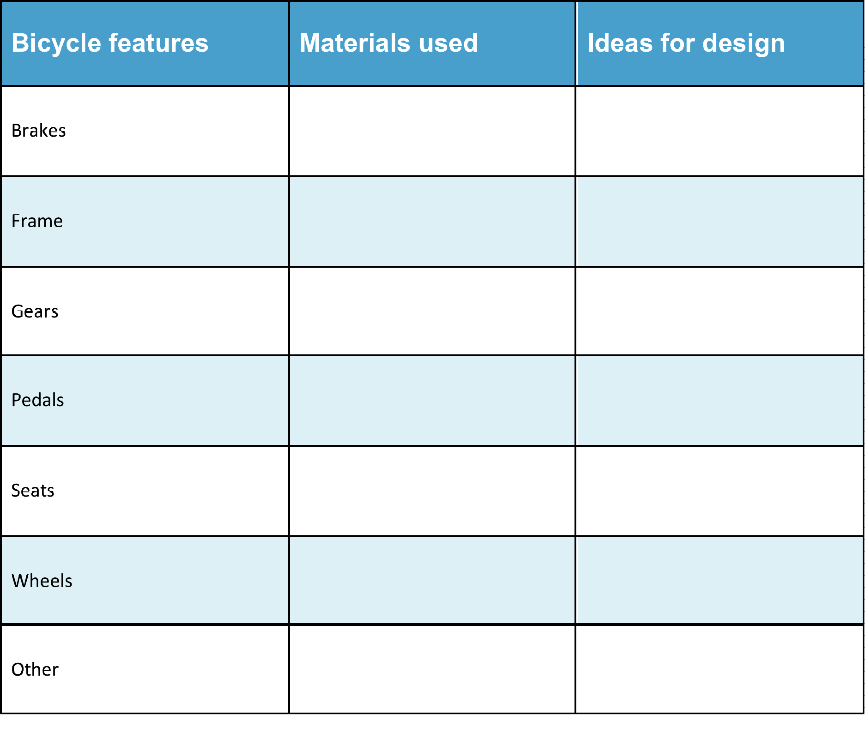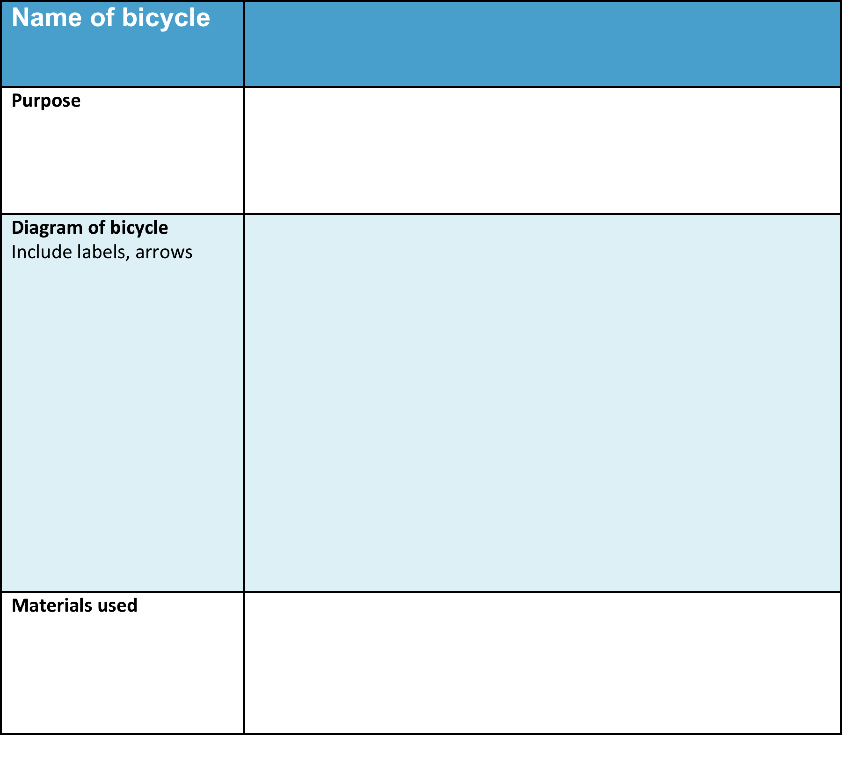Information for Teachers
Curriculum links
Australian Science Standards
DT (ACTDEK013) Suitability of materials, systems, components, tools and equipment for particular purposes
UIS (ACSHE051) Science knowledge helps people to understand the effect of their actions
New Zealand Science Achievement Objectives
MW: The characteristic chemical and physical properties of a range of different materials
NTTK: The relationship between the materials used and their performance properties in technological products
Helpful websites
Students can look up records for bicycles using search words, e.g. biggest bicycle, longest bicycle, most wheels on a bicycle.
They can find out about materials for making bicycles using search words, e.g. bicycle frames, bicycle wheels, bicycle brakes.
They can find out about how bicycles are being modified so that people with disabilities can ride them.
How to search the internet
1 Keep your request short
Fewer words will give a more accurate search.
2 Choose exactly what you want
For example: Arctic Circle Climate
3 Use quotes
Double quotes around a set of words tell the search engine to consider those exact words in that exact order without any change. For example: “Arctic Circle Climate”
4 Use the plus sign (+)
If you add a plus sign (+) between words, the internet will search for all the words. For example: migrate+birds+whales+mammal
5 Use the minus sign (–) to say what you don’t want
Use a minus sign (–) to show words you do not want to appear in your results. For example: if you search for burrowing animals and do not want mammals in your search, –mammals will exclude mammals. Note that you need to put a space before the minus sign for the word to be excluded.
6 Be very clear about what you don’t want
Part 1
Ask questions and make predictions
After reading Bicycles by Design, you may have many questions about how bicycles could change in the future.
List your questions
- Compare your list with questions that others have.
- Choose a question you would like to investigate.
- You can work alone, with a partner, or in a small group.
You may want to choose one or more of these questions to investigate
Q1. How would you design a better bicycle?
Q2. Think about people with differing abilities, or of different ages or capabilities – how could bicycles better suit them?
Q3. How could bicycles be more fun?
Go to Part 2 Plan and investigate →Part 2
Plan and investigate
Do searches in the internet or in books or talk to people who can help to find the information you are looking for.
Your teacher may suggest suitable websites for further information.
Go to Part 3 Record and analyse data →Part 3
Record and analyse data
Find a way of recording your information that will allow you to see any patterns in the data.
Data Chart for a bicycle design
Label the features you like. List materials used and make notes about your design ideas.
 Download Chart
Download Chart
Go to Part 4 Evaluate the information →
Part 4
Evaluate the information
1. Look over the information you have gathered and the patterns you have found.
What new things can your bicycle do? What is its purpose?
What problem have you solved?
What materials have you used for the bicycle’s features?
Draw your bicycle design. You might have a few versions. Do your drawings show how the bicycle would work?
2. Search for other patterns.
3. Makes notes about what you find.
Go to Part 5 Communicate and share ideas →Part 5
Communicate and share ideas
Look over all of the information that you have gathered in your investigation.
What are the most important ideas about the bicycle design?
Make a chart showing the most important ideas.
 Download Chart
Download Chart
← Return to menu
